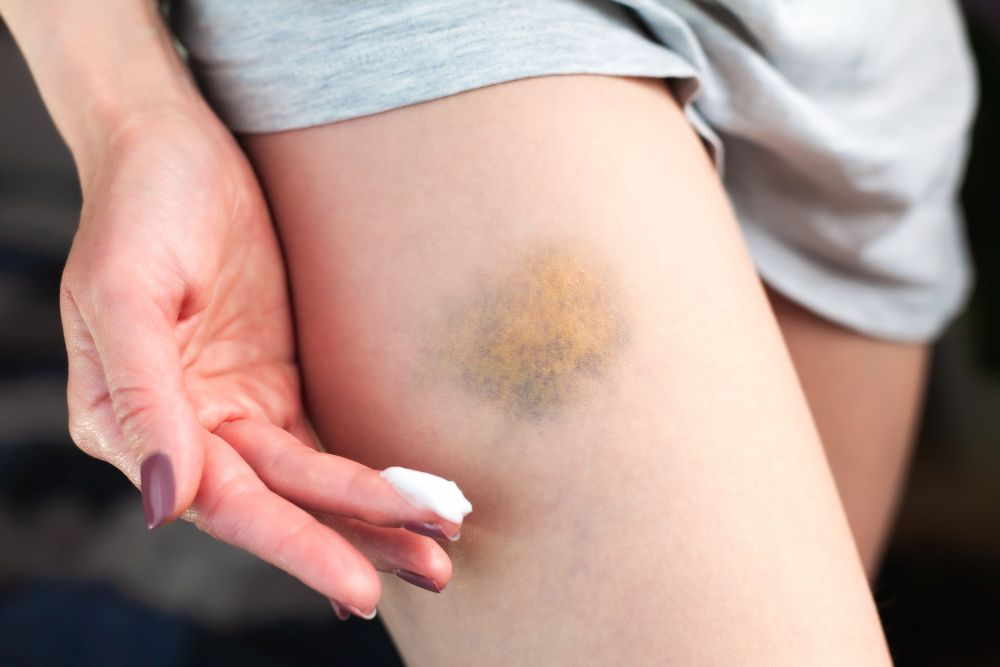Do Bruises Itch? Understanding Causes, Healing Process, and When to Seek Medical Attention
What causes bruises to itch during healing. How long does it take for a bruise to heal completely. When should you be concerned about a bruise that won’t go away. What are the signs of a more serious injury beyond a simple bruise.
The Science Behind Bruising: Causes and Formation
Bruises, also known as contusions, occur when blood vessels beneath the skin rupture due to an impact or injury. This results in blood leaking into the surrounding tissues, causing discoloration and sometimes swelling. But why do some people seem to bruise more easily than others?
Several factors can contribute to increased bruising susceptibility:
- Age: As we get older, our skin becomes thinner and less elastic, making it more prone to bruising.
- Medications: Blood thinners and certain pain relievers can increase the likelihood of bruising.
- Nutritional deficiencies: Low levels of vitamins C and K can affect blood clotting and skin strength.
- Medical conditions: Certain blood disorders or liver diseases can lead to easier bruising.
Understanding these factors can help individuals take appropriate precautions and seek medical advice if necessary.

The Healing Process: Why Do Bruises Change Colors?
One of the most intriguing aspects of bruises is their changing appearance over time. But what causes this color transformation?
The color changes in bruises are due to the breakdown of hemoglobin, the protein responsible for carrying oxygen in our blood. As the body’s immune system works to clear the leaked blood, the bruise goes through several stages:
- Red or purple: Initial stage, when blood first leaks into the tissues.
- Blue or dark purple: As oxygen is removed from the hemoglobin.
- Green: Indicates the breakdown of hemoglobin into biliverdin.
- Yellow or brown: Final stage, as biliverdin is converted to bilirubin before being cleared from the body.
This process typically takes 1-2 weeks, but larger bruises may take longer to heal completely.
The Itch Factor: Why Do Some Bruises Itch?
Many people experience itching as their bruises heal, but what causes this sensation? The itching associated with bruises is a normal part of the healing process and can be attributed to several factors:
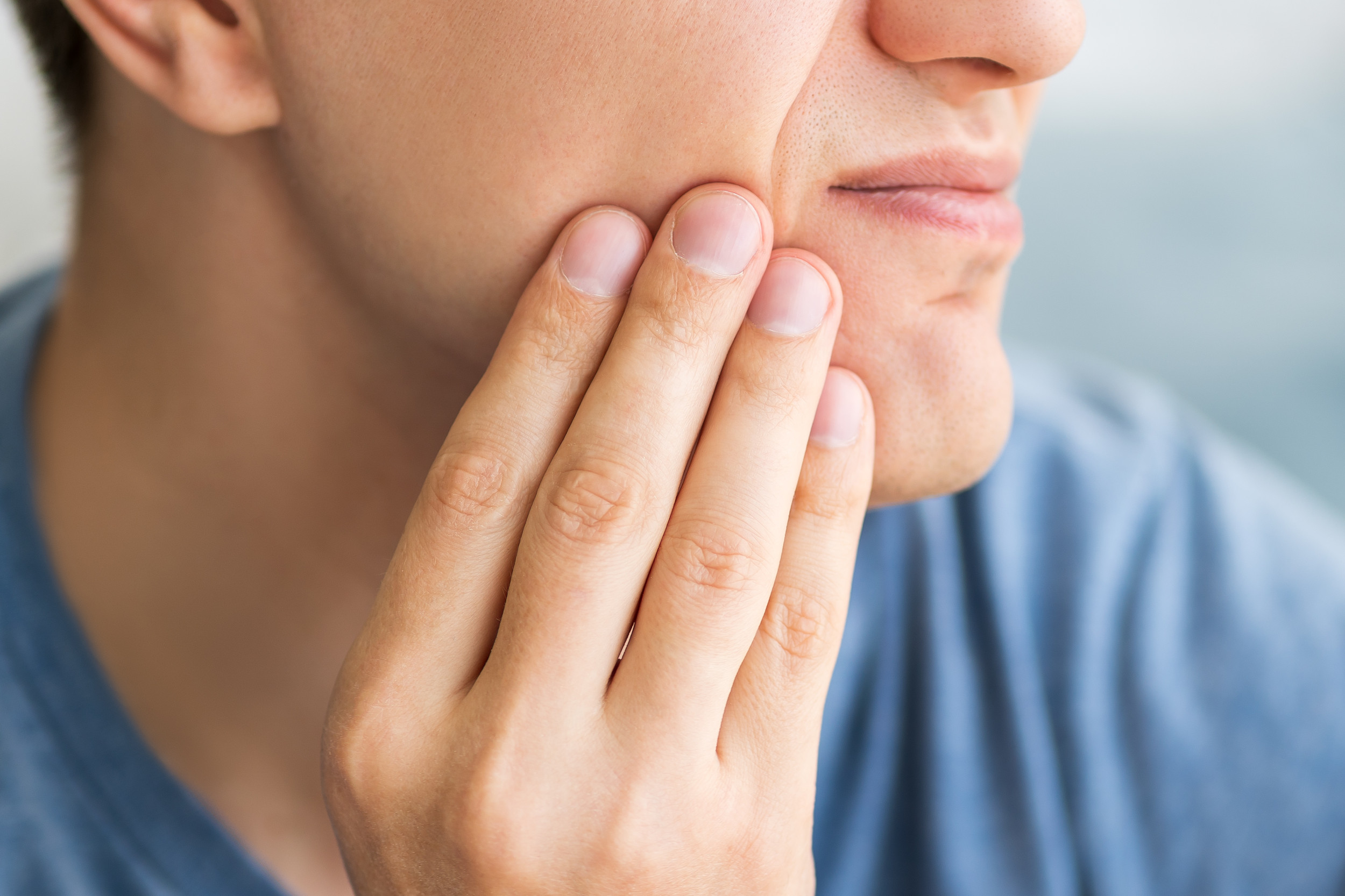
- Inflammation: The body’s immune response can cause localized inflammation, leading to itching.
- Histamine release: As white blood cells break down the leaked blood, histamines are released, which can cause itching.
- Nerve stimulation: The healing process can stimulate nerve endings in the affected area, resulting in an itchy sensation.
While itching can be uncomfortable, it’s generally a good sign that the bruise is healing. However, excessive itching or signs of infection should be evaluated by a healthcare professional.
Treatment Options: Speeding Up the Healing Process
While most bruises heal on their own, there are several steps you can take to promote faster healing and alleviate discomfort:
- Apply ice: Cold therapy can help reduce swelling and pain in the first 24-48 hours after injury.
- Elevate the affected area: This can help minimize swelling and promote blood flow.
- Use heat therapy: After the initial 48 hours, applying warm compresses can increase blood circulation and speed up healing.
- Take over-the-counter pain relievers: Acetaminophen can help manage pain, but avoid NSAIDs like ibuprofen, which may increase bruising.
- Try topical treatments: Arnica gel or vitamin K cream may help reduce bruising and promote healing.
It’s important to note that while these methods can help, they won’t make a bruise disappear overnight. Patience is key in the healing process.

When to Worry: Red Flags and Warning Signs
While most bruises are harmless and heal on their own, there are situations where medical attention may be necessary. Here are some warning signs to watch for:
- Bruises that don’t fade after two weeks
- Bruises that continue to be painful or swell
- Frequent, unexplained bruising
- Bruises accompanied by other symptoms like fever or extreme fatigue
- Bruises that occur after starting a new medication
If you experience any of these symptoms, it’s important to consult with a healthcare provider to rule out any underlying conditions or complications.
Prevention Strategies: Minimizing Bruising Risk
While it’s impossible to prevent all bruises, there are steps you can take to reduce your risk of bruising easily:
- Maintain a balanced diet rich in vitamins C and K
- Stay hydrated to keep your skin supple and resilient
- Exercise regularly to improve circulation and skin elasticity
- Use protective gear during sports and physical activities
- Be mindful of your surroundings to avoid accidental bumps and falls
By incorporating these strategies into your daily routine, you can help minimize your risk of frequent or severe bruising.
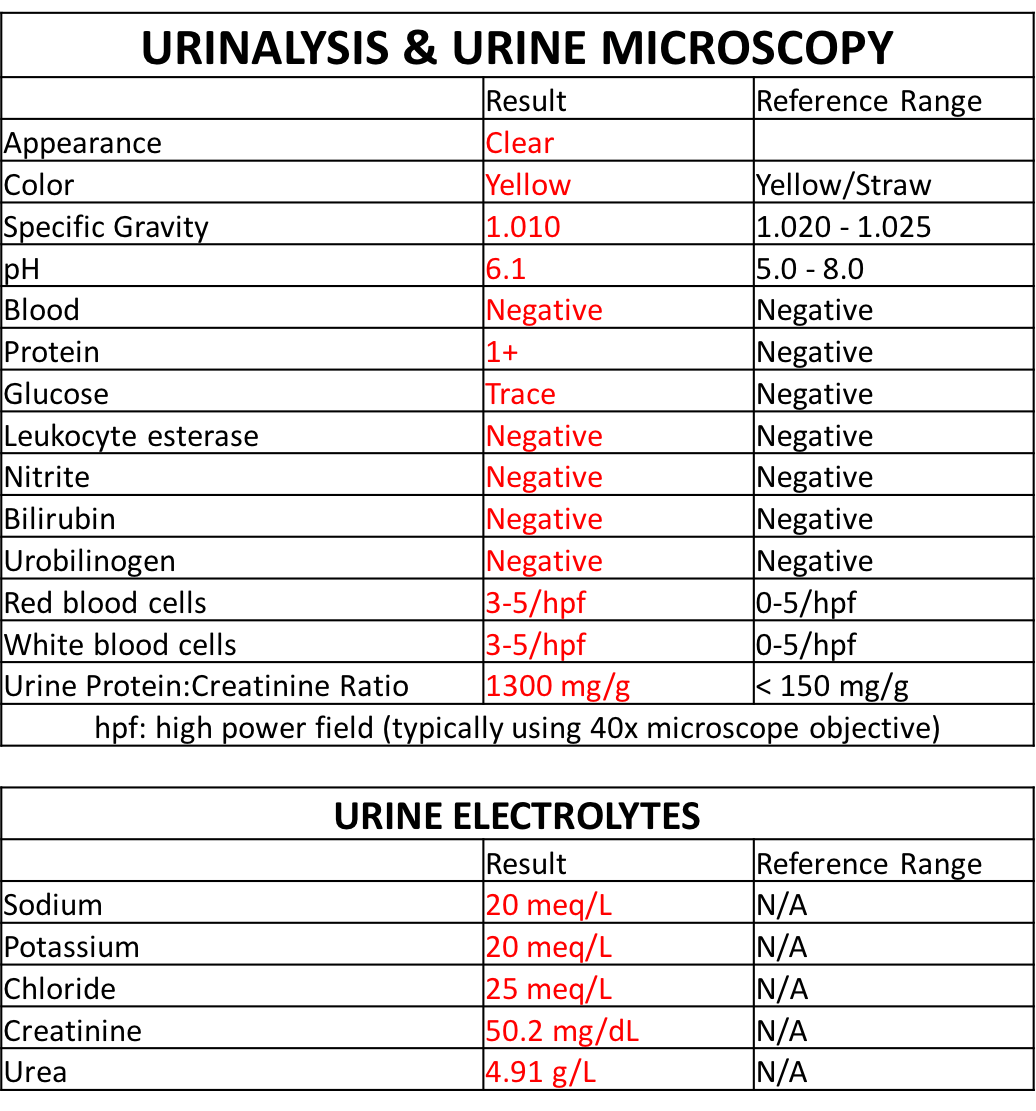
Bruising in Special Populations: Children, Elderly, and Athletes
Bruising can affect different populations in unique ways. Let’s explore some specific considerations for children, the elderly, and athletes:
Children and Bruising
Children are often more prone to bruising due to their active lifestyles and developing motor skills. However, excessive bruising in children can sometimes be a sign of more serious conditions. Parents should be aware of the following:
- Normal bruising typically occurs on the shins, knees, and elbows
- Bruises on the torso, ears, or neck may be cause for concern
- Bruises accompanied by unexplained nosebleeds or bleeding gums should be evaluated by a pediatrician
Elderly and Bruising
As we age, our skin becomes thinner and less elastic, making bruising more common. For the elderly, additional factors to consider include:
- Medications that can increase bruising risk, such as blood thinners
- The importance of fall prevention to avoid injury
- Potential vitamin deficiencies that may contribute to easy bruising
Athletes and Bruising
For athletes, bruising is often an occupational hazard. However, proper care and prevention can help minimize the impact of bruises on performance:
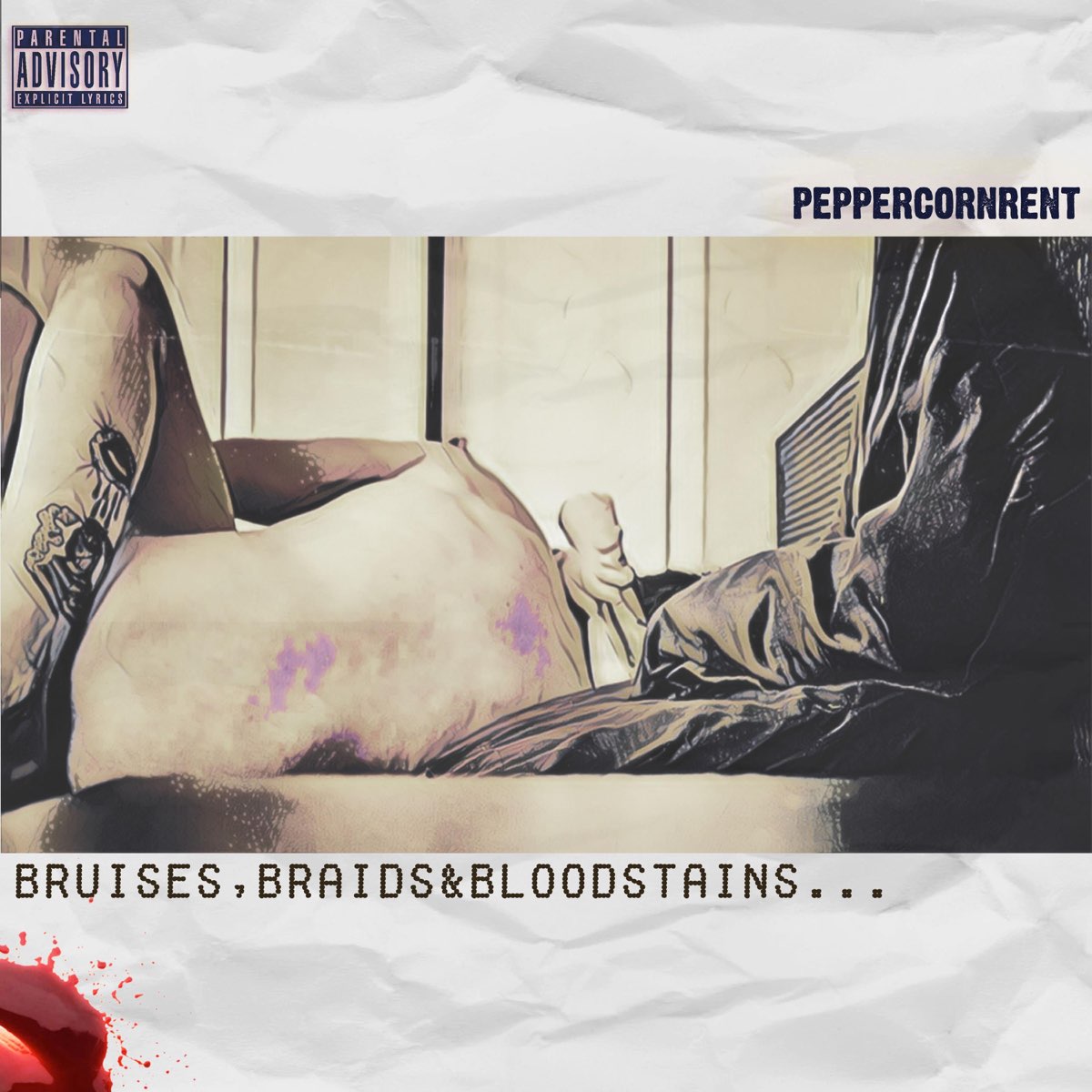
- Use of appropriate protective gear for specific sports
- Proper warm-up and cool-down routines to improve circulation
- Attention to nutrition to support healing and skin health
Understanding these population-specific factors can help individuals and caregivers better manage and prevent bruising.
The Role of Nutrition in Bruise Prevention and Healing
Nutrition plays a crucial role in both preventing excessive bruising and promoting faster healing. Key nutrients that support skin health and blood vessel integrity include:
- Vitamin C: Essential for collagen production and skin strength
- Vitamin K: Crucial for proper blood clotting
- Vitamin E: An antioxidant that supports skin health
- Zinc: Important for wound healing and immune function
- Bioflavonoids: Help strengthen blood vessels
Incorporating foods rich in these nutrients into your diet can help support your body’s natural ability to prevent and heal bruises. Some excellent food choices include:
- Citrus fruits and berries (Vitamin C)
- Leafy green vegetables (Vitamin K)
- Nuts and seeds (Vitamin E)
- Lean meats and seafood (Zinc)
- Colorful fruits and vegetables (Bioflavonoids)
While a balanced diet is usually sufficient, some individuals may benefit from supplements under the guidance of a healthcare provider.
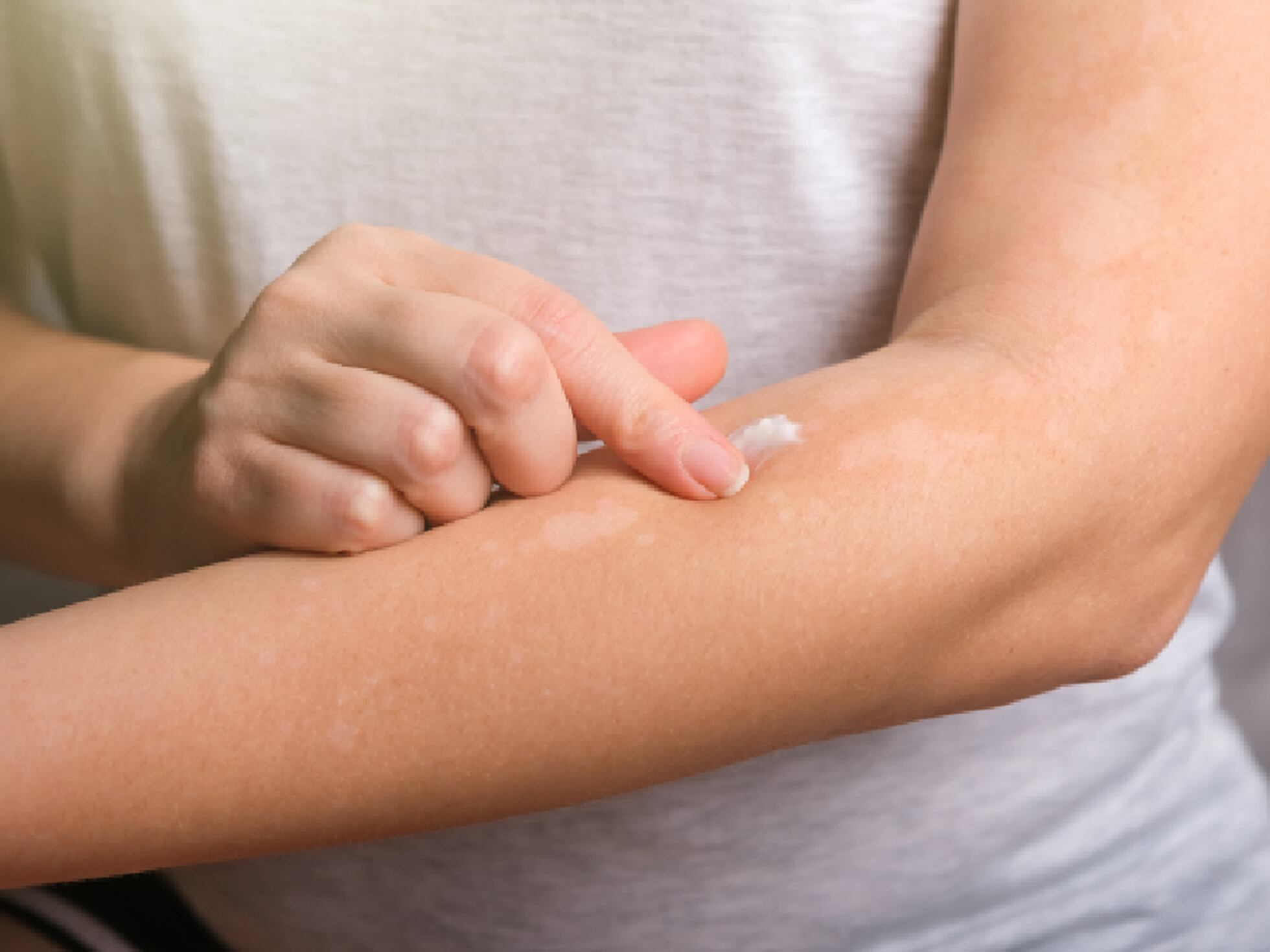
Psychological Impact of Bruising: Beyond the Physical
While bruises are primarily a physical concern, they can also have psychological effects, especially when frequent or severe. Some individuals may experience:
- Self-consciousness about visible bruises
- Anxiety about underlying health conditions
- Frustration with slow healing or recurrent bruising
It’s important to address these psychological aspects, particularly if bruising is impacting quality of life. Strategies to cope with the emotional impact of bruising include:
- Open communication with healthcare providers about concerns
- Education about the causes and normal healing process of bruises
- Seeking support from friends, family, or support groups if bruising is related to a chronic condition
Remember, while bruises are often a normal part of life, persistent concerns should be addressed with a healthcare professional to ensure both physical and emotional well-being.
Myths and Misconceptions About Bruising
There are many myths surrounding bruises and their treatment. Let’s debunk some common misconceptions:

Myth: Applying heat immediately after injury helps bruising
Fact: Applying cold therapy in the first 24-48 hours helps reduce swelling and pain. Heat should only be used after this initial period.
Myth: Bruises that itch are infected
Fact: Itching is often a normal part of the healing process and doesn’t necessarily indicate infection.
Myth: Bruises always indicate serious injury
Fact: While some bruises can be a sign of more severe injuries, most are harmless and heal on their own.
Myth: Only fair-skinned people bruise easily
Fact: People of all skin tones can bruise easily, depending on various factors like age, medications, and overall health.
Myth: Rubbing a bruise makes it go away faster
Fact: Rubbing a bruise can actually make it worse by causing more blood to leak into the tissues.
Understanding these facts can help individuals better manage their bruises and know when to seek medical attention.
Innovative Treatments and Future Research
While traditional treatments for bruising remain effective, ongoing research is exploring new approaches to prevent and treat bruises more effectively. Some areas of interest include:
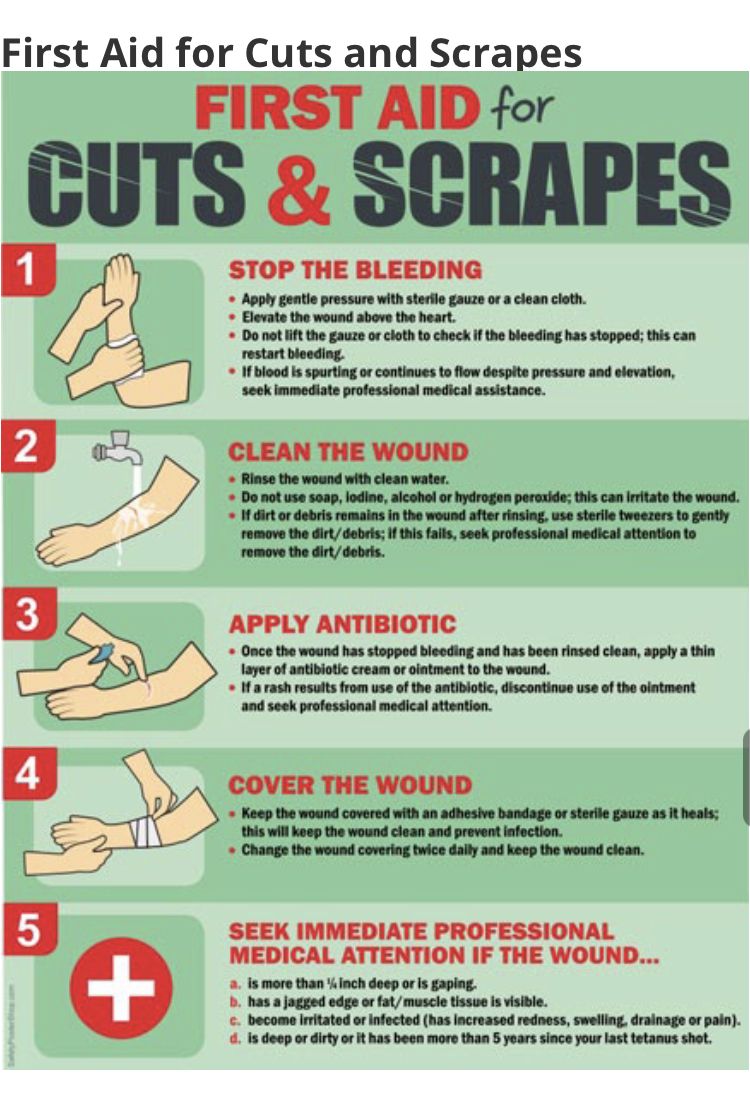
- Advanced topical treatments: Development of new creams or gels that can speed up the healing process.
- Light therapy: Investigation of how different wavelengths of light might influence bruise healing.
- Genetic research: Understanding genetic factors that contribute to easy bruising and developing targeted therapies.
- Nanotechnology: Exploring how nanoparticles could be used to deliver healing agents directly to bruised areas.
These innovative approaches hold promise for improving bruise treatment in the future, potentially offering faster healing times and more effective prevention strategies.
As research continues, it’s important to stay informed about new developments in bruise treatment and prevention. Always consult with healthcare professionals before trying new treatments, especially if you have underlying health conditions or are taking medications that may affect bruising.
Bruising 101: Why some people bruise easily, how bruises should look during healing and when to see a doctor
What causes bruising?
Bruises occur when blood comes out of blood vessels into the skin or just below the skin’s surface. Bruises can occur from a fall, accident, sports injury or medical procedure.
“Everyone experiences bruising, but they are more common in older people,” says dermatologist Ronald Sulewski, MD. “There are also some bleeding disorders and medical conditions that can make you more prone to bruising.”
What do bruises look like?
Bruises typically show up as red or purple dark spots or patches. They can change into various colors, including yellow, orange and green, as they evolve over a week or so.
“These changing colors in the skin are the result of hemoglobin being broken down by the body,” Dr. Sulewski explains. “Hemoglobin is the protein that carries oxygen to our tissues in our blood.”
How do bruises heal?
Bruises heal as the body’s immune system (white blood cells) breaks down the blood in the skin and under the skin over time.
“Bruises can itch as they are healing because the body’s immune system is breaking down the bruise,” says Dr. Sulewski. “The white blood cells use chemical signaling that can lead to itching.”
Can bruising cause blood clots or swelling?
Visible bruising in the skin is a superficial process. Signs of other deeper blood clots are usually swelling of the tissue and pain.
“Bruising can cause swelling, especially if more blood is present than the average bruise,” says Dr. Sulewski. “Sometimes patients get hematomas, which are larger and deeper than a bruise.”
Hematomas can be painful and swollen and can affect internal organs. They may require medical attention.
How can I help my bruise go away?
Most bruises will resolve within a week or two without treatment. Severe bruising and hematomas can last for a month or longer. To heal faster, you can:
- Rest and elevate the injured area to reduce swelling and relieve pain
- Apply ice packs for the first 24 to 48 hours after injury
- Apply a heating pad or warm compress to the injured area after two days
- Take over-the-counter pain medication, such as acetaminophen (Tylenol).
 Check with your doctor before using nonsteroidal anti-inflammatory drugs (NSAIDs) like Advil or Aleve
Check with your doctor before using nonsteroidal anti-inflammatory drugs (NSAIDs) like Advil or Aleve
Why do I bruise so easily?
Many things can cause frequent bruising. Most of these causes aren’t serious and don’t require treatment. You should discuss with your doctor to pinpoint what is causing your frequent or unexplained bruising.
Things that may cause you to bruise more easily include:
- Medications to thin blood/prevent clotting, like aspirin or blood thinners
- NSAIDs such as ibuprofen or naproxen
- Use of steroids, such as prednisone
- Past excessive sun exposure
- Low blood platelet count
- Vitamin C or vitamin K deficiency
- Bleeding disorders
- Medical conditions like cancer or liver disease
When should I see a doctor about my bruise?
“If you have a bruise that doesn’t go away, it might actually be a skin lesion rather than a bruise,” explains Dr. Sulewski. “If your bruise remains for more than a month or is extremely painful or swollen, you should have it checked by your doctor.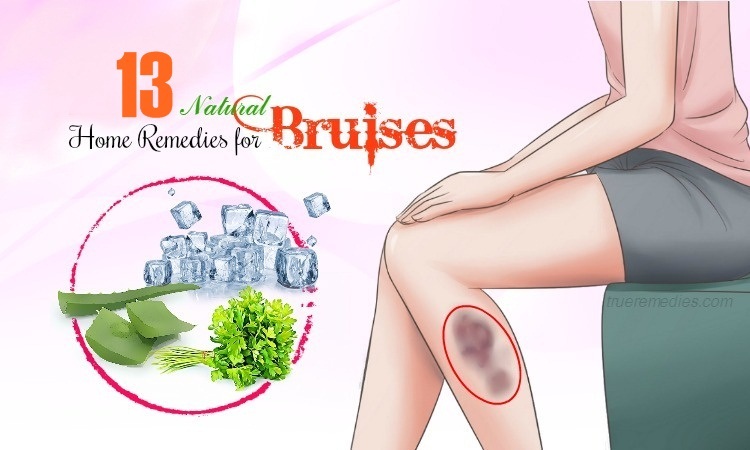 ”
”
Also, if you have multiple, unexplained bruises or a bruise that keeps returning to the same area, your doctor may order tests to pinpoint the cause. Tests may include X-rays to check for bone fractures and blood tests to check for clotting disorders and vitamin deficiencies.
Related stories:
11 concussion signs and symptoms and where to seek help
Neuropsychologist Kate Higgins, PsyD, ABPP-CN and athletic trainer Rusty McKune, ATC, treat concussions regularly. Here they share what to watch for and when to get help.
Read More
You asked, we answered: When are stitches necessary?
When does a cut need stitches?
Read More
Tennis elbow, ACL tear, sprained ankle and more: 6 common sports injuries and how to treat them
Summer brings warm weather, making it a great time for outdoor activities like running, swimming, golfing and playing team sports. The uptick in outdoor activities also makes summer the perfect storm for sports injuries.
The uptick in outdoor activities also makes summer the perfect storm for sports injuries.
Read More
Why do bruises itch? Causes, treatments, and when to see a doctor
A bruise develops when an injury does not break the skin’s surface but still causes small blood vessels just below the surface to break, leaking blood into the surrounding tissue.
Bruises are also called contusions.
Most bruises heal without medical treatment, and it is normal for a bruise to change colors and even itch during this process.
A bruise will look different according to a person’s skin color and may be more difficult to identify on darker skin. In general, bruises appear as discolored or darker patches on the skin.
Learn more about how to identify bruises on darker skin here.
Bruises can look red or purple when they first appear, changing to yellowy-green as they heal. This is the time when bruises may start itching.
Muscles and bones can bruise, too. Bruises can cause the surrounding areas to become swollen, stiff, and sore. A bruised muscle may cause reduced motion, while more severe bruises, or hematomas, can cause a raised, swollen, and painful bump to form.
Bruises can cause the surrounding areas to become swollen, stiff, and sore. A bruised muscle may cause reduced motion, while more severe bruises, or hematomas, can cause a raised, swollen, and painful bump to form.
Researchers have not determined why some bruises itch. Contributing factors can include dry skin and the healing process itself.
Dry skin is often itchy. If people with dry skin develop a bruise, the area can become very sensitive and painful. If a person does not moisturize the dry skin where the bruise is, the bruise might become itchy.
Older adults may be particularly vulnerable to itchy bruises since they tend to bruise more easily and are more likely to have dry skin.
Long-lasting bruises on the hands and arms are called actinic purpura.
Most often seen in older adults, actinic purpura typically develop due to thin skin, weakened blood vessels, and the use of steroids and blood thinners, such as coumadin and alcohol. People with dry skin may develop itchy bruises.
Bruises are a type of wound known as a pressure wound. According to a 2015 article, itching is a typical healing response for all types of wounds.
Experts say histamine, which the body releases as a wound heals, and high bilirubin levels, which can also increase as wounds heal, can cause itching.
Sometimes, bruises develop as a result of an itch. For example, some people are so sensitive to bites from mosquitos, bed bugs, or other pests that they scratch hard enough to give themselves bruises.
An itchy bruise is usually not a sign of infection.
Experts list increasing pain and swelling, expanding discoloration of the skin, pus, and feeling sick as key signs of wound infection. They do not mention itching as a sign.
Additionally, while many different infections, such as cellulitis, folliculitis, impetigo, and chickenpox, can affect the skin, these do not resemble bruises.
According to the American Cancer Society, itching can have associations with severe illnesses, such as leukemia, cancer of the blood cells. However, when a person has leukemia or another blood cancer, they typically experience itching over their whole body, not just one spot. A person cannot trace this kind of itching back to a rash, bruise, or dry skin.
However, when a person has leukemia or another blood cancer, they typically experience itching over their whole body, not just one spot. A person cannot trace this kind of itching back to a rash, bruise, or dry skin.
The basic treatment for bruises, whether they itch or not, involves:
- resting and elevating the bruised area if possible and comfortable
- icing the site in the first 2 days after the injury
- applying heat to the injury after 48 hours
- taking over-the-counter (OTC) pain relief medication, if needed
Further treatment can benefit an itchy bruise:
- washing the bruised area with warm, not hot, water
- using gentle, non-irritating soap
- applying soothing lotions to treat dry skin and calm the itch
- taking OTC antihistamines, if needed
People who have what appears to be an itchy bruise but have no apparent reason for a bruise may have a skin condition that causes a rash.
For example, skin conditions, such as eczema or atopic dermatitis can cause rashes that are so itchy that people bruise themselves while scratching or rubbing.
The condition can also cause the skin to discolor over time, so the affected area looks more like a bruise than a rash.
Psoriasis is another common skin condition. According to the National Psoriasis Foundation in 2014, more than 8 million people in the United States had psoriasis. Psoriasis can cause itchy scales to develop anywhere on the body, particularly the knees, elbows, and scalp.
When People of Color have psoriasis, their plaques tend to be purple, grayish, or darker brown and may look more like bruises than psoriasis plaques.
The majority of bruises heal without medical treatment. Indications that it may be time to contact a doctor for treatment include:
- frequently bruising with no apparent reason
- having a bruise that lasts for more than 2 weeks without much improvement
- developing signs of infection, such as increasing redness or swelling, around the bruise
Experiencing significant pain or pressure in the injured area may signify a serious condition called compartment syndrome, which requires prompt medical treatment.
Bruises are very common injuries that generally heal on their own without medical treatment.
During the healing process, it is normal for bruises to change color, and some people may experience itching as well.
Experts have not determined one particular cause for itchy bruises, although dry skin and the natural healing process may be factors.
Some skin conditions, such as eczema or psoriasis, may cause rashes that people might confuse with bruises.
It is also possible for people to develop bruises after intensely scratching their skin due to another condition, such as an insect bite or eczema.
Anyone who experiences bruising that seems unusual, infected, or very painful, see a healthcare professional.
Bruises and hematomas: general information
Is there a difference between a bruise and a hematoma, when to apply heat, and when cold – all the most important thing about bruises
Any injury ruptures tiny blood vessels called capillaries. Blood accumulates under the surface of the skin and appears as black-blue spots. “Hematoma” is a medical term that originated from the words “blood” and “tumor”, while the word “bruise” is a vernacular.
Blood accumulates under the surface of the skin and appears as black-blue spots. “Hematoma” is a medical term that originated from the words “blood” and “tumor”, while the word “bruise” is a vernacular.
How bruises appear
The cause of any hematoma is damage to the wall of a blood vessel as a result of fractures, dislocations, bruises, surgical and cosmetic manipulations.
The more severe the injury and the more blood flows from the vessel, the faster the hematoma appears after the injury. Light bruises occur 24 hours after the bruise, moderate bruising – after 3-5 hours, severe – after 1-2 hours. Severe and extensive hematomas require surgical treatment, moderate – conservative.
Bruise life cycle:
1. From a damaged blood vessel, blood flows into the surrounding tissues, forming a cavity. Fresh blood is red, jelly-like, with purple clots. The damaged area turns red, swells and hurts a lot.
2. After 3-4 hours the blood coagulates: the bruise darkens and becomes black-violet.
3. Within 10-14 days, the hemoglobin contained in the coagulated blood breaks down. The bruise changes color: turns green, turns yellow, turns pale.
4. Clots dissolve, clotted blood is sucked back into the bloodstream – pain and swelling subside.
Approximate bruise healing time is 1.5-2 weeks.
Risk factors
There are circumstances that make a person bruise more often and take longer to heal:
· Fragility of vessel walls. Where the elastic vessel withstands a slight blow, the fragile one breaks – and a bruise appears. Fragility of blood vessels occurs with a deficiency of certain vitamins and microelements, atherosclerosis, diabetes mellitus, poor training of blood vessels (as a result of a sedentary lifestyle).
· Blood clotting disorders: liver disease or use of blood-thinning drugs.
What bruises should alert
If the bruise continues to hurt after 5-7 days, becomes hot, pulsates, the edema does not decrease, it is necessary to urgently contact the surgeon. If there are a lot of bruises, they appear out of the blue, “for no reason” – this requires a consultation with a therapist.
If there are a lot of bruises, they appear out of the blue, “for no reason” – this requires a consultation with a therapist.
When a bacterial infection is attached, the hematoma is filled with purulent or serous contents. The bruise does not resolve, but thickens, pain and swelling increase. An abscess develops. An abscess requires surgical intervention: opening, washing, applying a bandage, prescribing antibiotics.
Complications of hematomas
If the hematoma does not resolve for a long time, it begins to scar and form fibrous tissue. An old hematoma retains hardness, soreness, and can become inflamed. The principle of treatment of bruises: first stop the bleeding, then – accelerate healing.
How to treat bruises
· First 24 hours: stop bleeding
Dry cold should be applied as soon as possible: it will constrict blood vessels, prevent large amounts of blood from flowing out, reduce swelling and pain.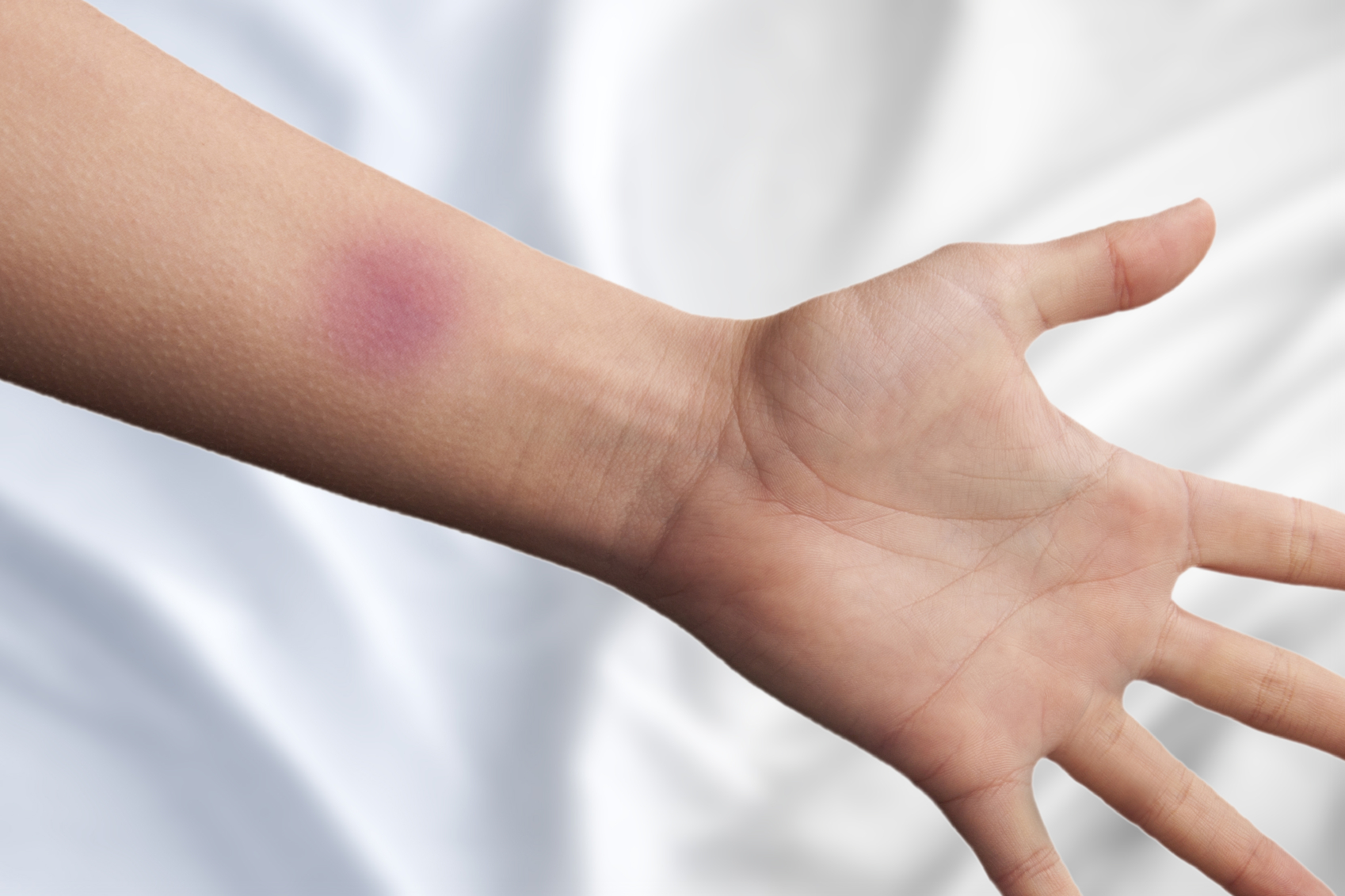 At home, you can take something from the freezer and apply it through a soft cloth for 5-10 minutes intermittently.
At home, you can take something from the freezer and apply it through a soft cloth for 5-10 minutes intermittently.
Relieve inflammation, pain and accelerate resorption
The next stage of healing is to accelerate blood flow at the site of injury. You can gently apply dry heat (a warm cloth, for example) to increase circulation. At the same time, it is necessary to start using means that promote the healing of bruises. Note that for the first two to three days, a very hot bath or shower can increase bleeding and swelling.
Folk methods
Folk remedies relieve the condition a little, but you should not count on a serious therapeutic effect.
Table salt
Hypertonic (saturated) salt solution relieves swelling. You need to dissolve 1 tablespoon of salt in a liter of water. Soak a soft cloth in the solution and apply to the bruise.
Cabbage
Cabbage from the refrigerator can be used as a cold compress.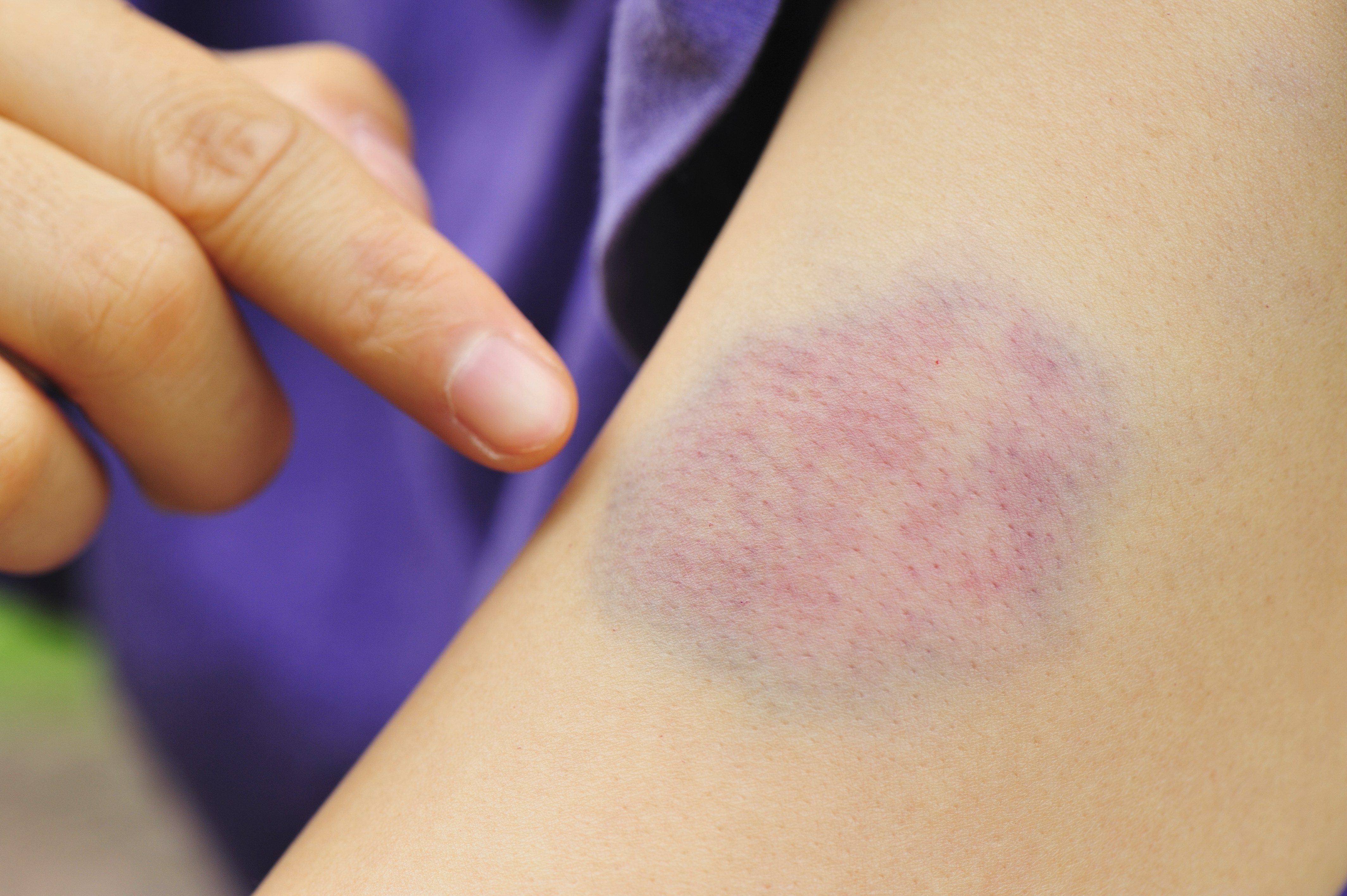 It is recommended to knead the cabbage leaf so that the juice appears and apply to the bruise. Due to the released juice, the cabbage leaf acts as a saturated solution, therefore it relieves swelling.
It is recommended to knead the cabbage leaf so that the juice appears and apply to the bruise. Due to the released juice, the cabbage leaf acts as a saturated solution, therefore it relieves swelling.
Pharmaceutical remedies for bruises
An example of a “bruise” drug is Detragel. It contains a combination of three active ingredients: heparin, escin and essential phospholipids [3]. When applied, essential phospholipids form special structures – liposomes, which contribute to the rapid penetration of heparin and escin into the skin [4]. Heparin is a natural anticoagulant that reduces blood viscosity and reduces inflammation. Escin strengthens the walls of blood vessels and enhances microcirculation, helping to restore damaged tissues [2].
THERE ARE CONTRAINDICATIONS. IT IS NECESSARY TO CONSULT WITH A SPECIALIST.
1. Glukhov A.A., Fundamentals of care for surgical patients. Moscow: GEOTAR-Media. – 2008.
2. Escin: pharmacology, pharmacokinetics and therapeutic profile https://pubmed.
 ncbi.nlm.nih.gov/11529685 3. Instructions for the medical use of the drug Detragel ® LP-001044 https://detralex.ru/products/detragel/
ncbi.nlm.nih.gov/11529685 3. Instructions for the medical use of the drug Detragel ® LP-001044 https://detralex.ru/products/detragel/4. Savelyeva MI Possibilities of transdermal drug delivery systems used in chronic venous diseases. Phlebology. 2018;12(1): 40-49
Why does this bruise itch and what can I do about it? – Drink-Drink
A bruise, also called a bruise, occurs when a small blood vessel just below the surface of the skin ruptures and blood seeps into the surrounding tissue.
Bruises are most often caused by trauma, such as a fall or a blow to something, but they can also be caused by muscle strains, sprains, or broken bones.
Certain medical conditions can make you more prone to bruising, especially conditions that cause low platelets or bleeding disorders such as thrombocytopenia. You may also be more prone to bruising as you age because your skin gets thinner and you have less fat under your skin.
In addition to bruising, you may also experience pain and tenderness at the site of injury. The bruise will change color from red to purple and brown to yellow before disappearing completely.
The bruise will change color from red to purple and brown to yellow before disappearing completely.
Some people report that their bruise itches, which is medically known as itching, although it is not clear why.
Some medical conditions, such as leukemia and liver disease, and some drugs, such as chemotherapy, can cause both bruising and itching of the skin. Scratching the itchy area too hard can also lead to bruising.
However, in the absence of other conditions, it is not clear why a bruise might itch during healing. There are several theories, but no definitive conclusion has been drawn. Unless you have other symptoms, an itchy bruise is unlikely to be a cause for concern and will likely go away in a few days.
Itchy bruising causes
In the absence of underlying disease, it is not clear why a bruise might itch during healing. Theories include:
- Your skin can be dry if you avoid using moisturizers on a tender bruise, which can cause itching.

- When red blood cells break down, they release a compound known as bilirubin. High levels of bilirubin are known to cause itching.
- Increases blood circulation in the damaged area. Circulation is necessary to remove waste products and renew cells. Itching and tingling of the skin can be a sign of increased circulation. It may also be related to how the nerves respond to increased blood flow during wound healing.
- Bruises can also increase histamine levels due to inflammation in the area. Histamine is known to cause itching.
It is also well known that dry skin can become itchy. Dry skin can be caused by health problems such as diabetes or kidney disease, or living in a cold and dry climate. Older people tend to bruise more easily and are also prone to dry and itchy skin.
What can cause bruising and itching along with a rash or lesion?
A bruise may appear itchy if the bruise itself was caused by scratching an underlying rash, lesion, or bump caused by something else.
Beetle bite
The bite of an insect such as a mosquito, fire ant, tick or flea can cause excessive scratching. This is because your body is reacting to the poison or other proteins the insects inject into you.
If you scratch the skin too hard, you can damage the skin and cause bruising. The bug bite and the bruised area will continue to itch until your body stops responding to the bite. Some types of mites can also cause an itchy, bruised rash.
Leukemia
Although rare, frequent bruising or bruising that does not heal, along with itching of the skin, may be a sign of leukemia. Other symptoms of leukemia include:
- fatigue
- pale skin
- frequent bleeding
- bone pain
- swollen lymph node
- weight loss
- unexplained weight loss
- yellowing of the skin and eyes (jaundice)
- dark urine
- abdominal pain and swelling
- nausea
- fatigue
- Apply moisturizer to your skin every day.
- Avoid hot showers. Instead, use warm water.
- Use mild soap in the shower.
- Try using a humidifier to add moisture to the air.
- Avoid scratches.
- Apply topical anti-itch creams.
- Take oral pain relievers.
- Use antihistamines.
- Apply a thin paste of baking soda and water to the bite site.
9 0109
Breast cancer
Inflammatory breast cancer may look like a bruise on the chest . Your breasts may also feel tender and warm, and you may find swelling on or near your breasts. The breasts may also itch, especially near the nipple.
The breasts may also itch, especially near the nipple.
Liver disease
Some types of liver disease, including liver cancer and cirrhosis (scarring) of the liver, can also cause itchy skin and bruising.
Other symptoms of liver disease include:
9 0093 vomiting
Medicines, including including chemotherapy and antibiotics, can also cause itchy skin and easy bruising.
Treating an itchy bruise
If itching is caused by dry skin, here are some ways to help:
Talk to your doctor if you think bruising or itching is a side effect of the medicine.
For an insect bite or rash, try the following to relieve itching:
Avoid scratching the bug bite. Scratching can damage the skin and lead to infection.
In most cases, bruises go away on their own without care. The body reabsorbs the blood over several days. You can apply a cold compress if there is swelling and pain along with the bruise.
Conclusion
The reason why a bruise may itch during healing is unclear, but there are several theories. A bruise that itches while healing is most likely not a cause for concern.
Some medical conditions can cause both itchy skin and easy bruising. If you notice any other symptoms along with itching and bruising, or if you think a medication is causing your symptoms, see your doctor. You should also see a doctor if your body itches easily and bruises for no apparent reason.

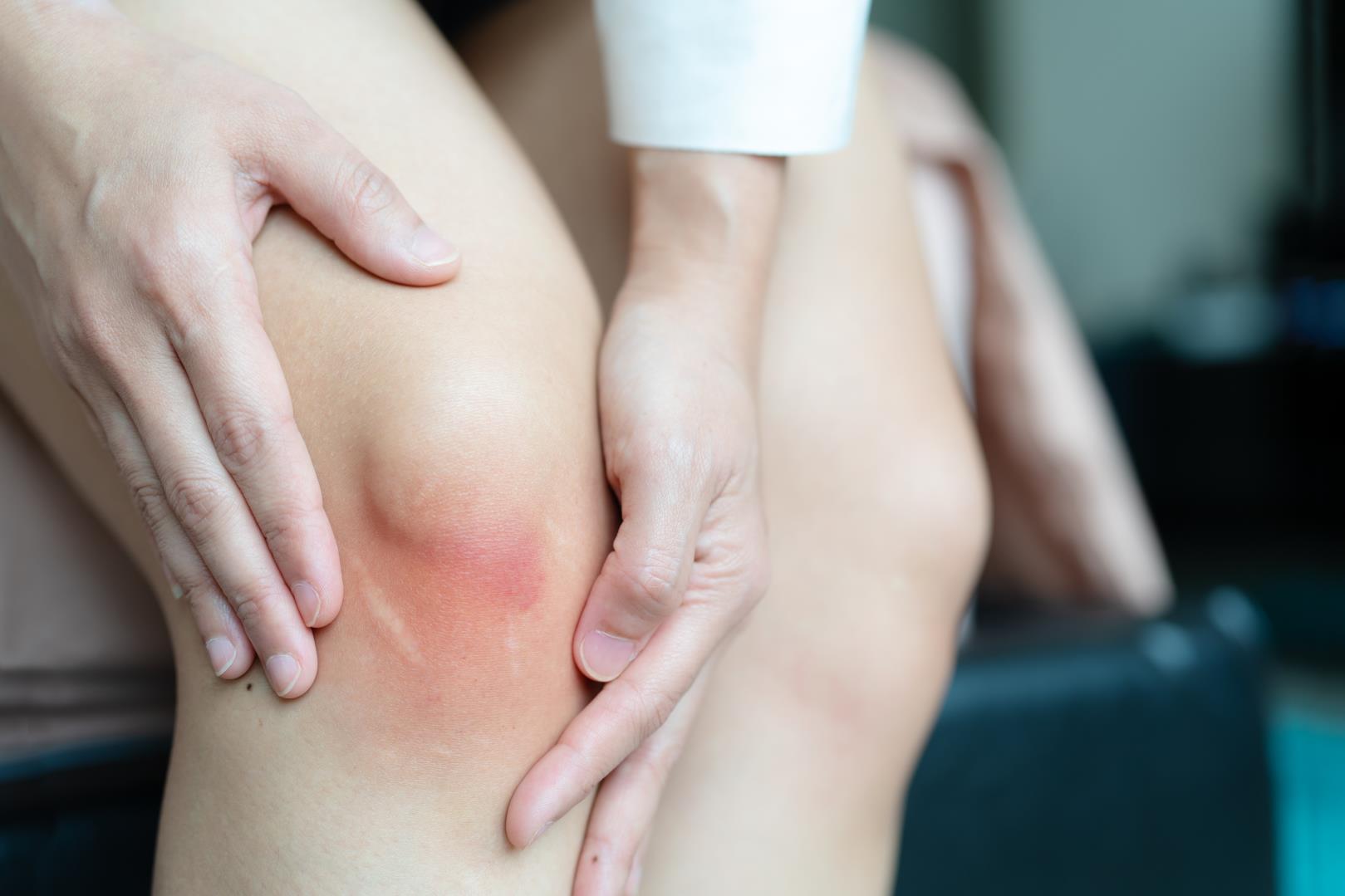 Check with your doctor before using nonsteroidal anti-inflammatory drugs (NSAIDs) like Advil or Aleve
Check with your doctor before using nonsteroidal anti-inflammatory drugs (NSAIDs) like Advil or Aleve  ncbi.nlm.nih.gov/11529685 3. Instructions for the medical use of the drug Detragel ® LP-001044 https://detralex.ru/products/detragel/
ncbi.nlm.nih.gov/11529685 3. Instructions for the medical use of the drug Detragel ® LP-001044 https://detralex.ru/products/detragel/